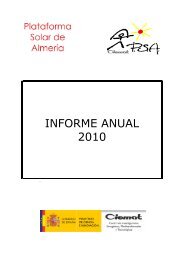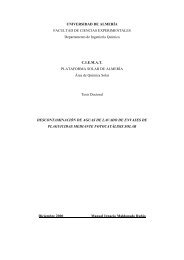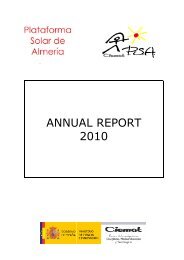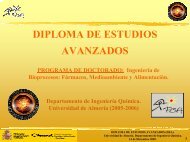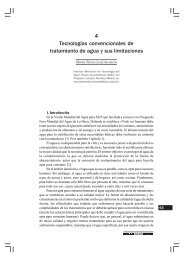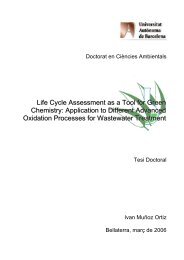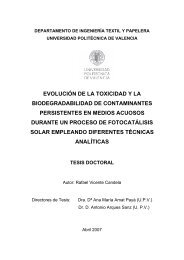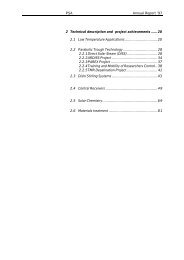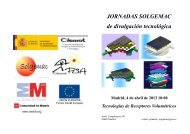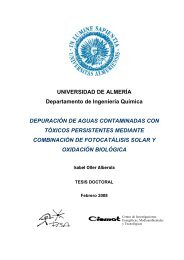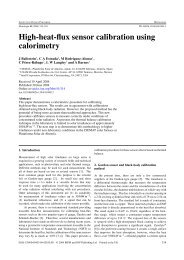Annual Report 2006 - Plataforma Solar de AlmerÃa
Annual Report 2006 - Plataforma Solar de AlmerÃa
Annual Report 2006 - Plataforma Solar de AlmerÃa
You also want an ePaper? Increase the reach of your titles
YUMPU automatically turns print PDFs into web optimized ePapers that Google loves.
FACILITIES AND INSTALLATIONS<br />
2.4.4 EURODISH<br />
The second and latest attempt to make this technology economical is the<br />
Spanish-German EUROdish project. Two new prototypes were <strong>de</strong>signed and<br />
erected to:<br />
• Reduce the price of components by using standard industrial elements.<br />
• Develop a new dish manufacturing system discarding the stretchedmembrane<br />
technology and applying a composite-material molding system.<br />
• Develop a new optimized system assembly procedure that uses new<br />
specially <strong>de</strong>veloped tools.<br />
• Remote control and monitoring over the WWW.<br />
• Improve the Stirling SOLO V161 motor, especially those components<br />
used in the receiver cavity.<br />
• Test pre-commercial units as reference systems.<br />
Figure 2.11<br />
Front and back views of the EUROdishes.<br />
2.5 <strong>Solar</strong> Furnace<br />
2.5.1 General Description and Principles of Operation<br />
<strong>Solar</strong> furnaces reach concentrations of over 10,000 suns, the highest energy<br />
levels achievable in a solar concentrating system. Their main field of<br />
application is materials testing, either in ambient conditions, controlled atmosphere<br />
or vacuum, or solar chemistry experiments using chemical reactors<br />
associated with receivers.<br />
The solar furnace essentially consists of a continuously solar-tracking, flat<br />
heliostat, a parabolic concentrator mirror, an attenuator or shutter and the<br />
test zone located in the concentrator focus [Martínez and Rodríguez, 1998].<br />
The flat collector mirror, or heliostat, reflects the parallel horizontal solar<br />
beams on the parabolic dish, which in turn reflects them on its focus (the test<br />
area). The amount of inci<strong>de</strong>nt light is regulated by the attenuator located<br />
between the concentrator and the heliostat. Un<strong>de</strong>r the focus there is a test<br />
table movable in three directions (East-West, North-South, up and down) that<br />
places the test samples in the focus with great precision.<br />
23



